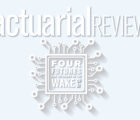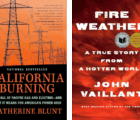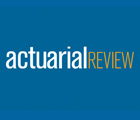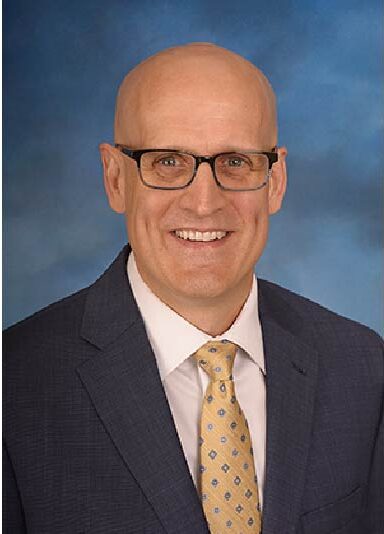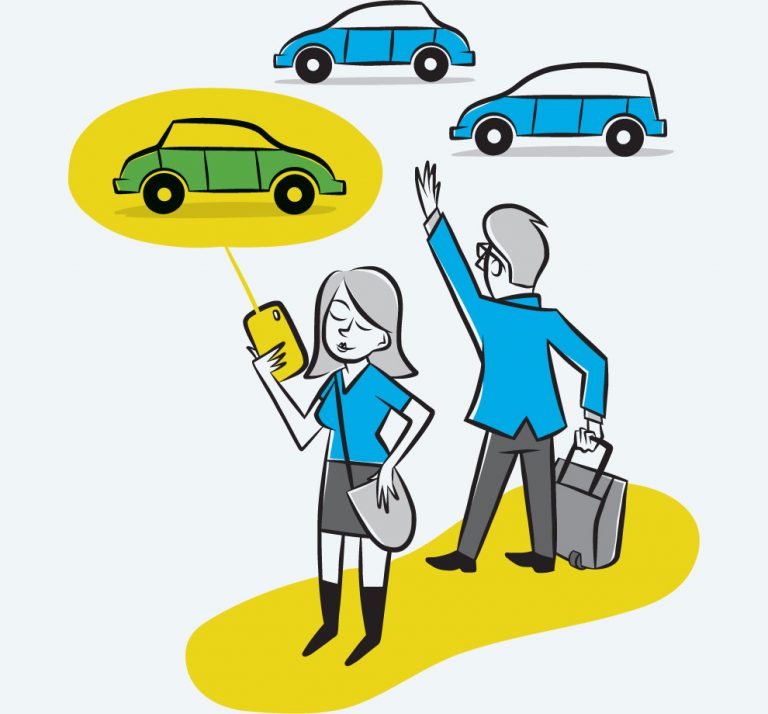
Technological changes such as driverless cars, telematics and the sharing economy are likely to have significant impact on the auto insurance industry, actuaries were told in a presentation at the CAS Ratemaking and Product Management Seminar in Orlando.
The sharing economy, or the use of an app to bring together drivers and people seeking a ride (e.g., Uber, who pioneered ride sharing), will reduce vehicle ownership and private vehicle mileage, thus shrinking insurance premium. It will also introduce new insurance needs and create a greater fragmentation of products.
Uber drivers can plug into the system at any time, essentially creating a class of part-time taxi drivers. When drivers are not plugged into the app, they are covered by personal auto insurance.
When they turn on the app, they become in essence a small business, and their personal auto insurance no longer covers them. Turning on the app creates a waterfall of new insurance needs, said Tammy Chen, a former Willis Towers Watson insurance industry consultant. Consider the stages of a ride share:
- Drivers turn on their apps, plugging into the system.
- Drivers get a fare and drive to pick up the passenger.
- The driver takes the passenger to where he or she wants to go.
Uber and similar companies typically cover the last two stages. Drivers are usually responsible for the risk in the first stage, but the standard personal auto policy may not cover them, as they are conducting a business at that moment. They need to buy a special endorsement. Since Uber covers the last two stages, drivers preferably will want a reduced personal auto insurance coverage.
Chen called attention to the pattern. A simple insurance transaction — a driver needs insurance — becomes complicated when the driver switches from a recreational motorist to a commercial enterprise.
Smartphones and similar technology will complicate more and more insurance transactions, Chen said.
Other examples include:
- Zipcar, a service where customers enter a contract that gives them the right to rent a car parked nearby for a short period, from a couple of hours to a day or more. Zipcar provides some insurance, though their customers may want additional “top off” coverages, depending whether they have personal auto policies or not. In addition, many private auto insurance policies will cover rentals, but often with limitations.
- Bla Bla Car, an app that connects two people headed for a common destination. “It’s a hitchhiking app,” Chen commented. But the car switches between personal use and commercial use. The driver may want additional coverages to protect against picking up strangers in private vehicles. Riders may also want to purchase unique insurance coverages, especially if they don’t have a personal auto policy.
Insurers need to watch and respond to this fragmentation of risk, Chen said. For ride-sharing, the industry developed an endorsement that covered the new risk. It will have to respond similarly to new fragmentation.
Insurers have been responding to other critical changes in the marketplace, said Sheri Scott, FCAS, a principal at Milliman.
Scott described the movement insurers have made in marketing their policies online.
Before the internet, she said, companies would advertise to build their brand, and agents would advertise to attract customers to their own agency. But in the 1980s, Britain and Canada began selling insurance direct to customers, bypassing agents. In the U.S., GEICO began an aggressive push with brand marketing and phone sales.
By the 1990s, Scott said, Progressive and other companies began building aggregator sites, which let customers compare rates. Esurance, Homesite, Electric Insurance and others followed with a granular ratemaking approach and internet presence.
Marketing strategies changed as well, following GEICO’s model of spending millions to get the customer to shop online or by phone.
All along, companies have faced the challenge of selling in the new medium without alienating the agency network. But all those companies, Scott said, understood that “selling over the internet and over the phone should be very different than face-to-face with an agent.”
More recently, she said, companies have automated their underwriting and rating processes, so policies can be bound online. Online binding is common in auto insurance, she said, and predicted that in the next six months home insurers will be binding online as well.
Actuaries have followed the automation trend, too, Scott said. Homeowners insurance is increasingly rated by peril, meaning that each major peril in the policy — fire, theft, water — is rated separately. (In the past those risks were bundled together to develop a rate.)
And new variables are being used, like the age of a roof and its shape, or the distance a property is from the coast.
In the future, Scott said, insurers will likely use connected devices like smartphones to gather information that drives rates. Companies like Nest will be able to monitor all the products in a home. “It can tell me if an alarm is going off, what kind of alarm it is,” Scott said. Wallflower tells consumers via smartphone if they left on a gas burner or a curling iron. Liftmaster can tell people if they left their garage door open and lets them close it via smartphone.
All of this information can be used to adjust insurance rates, Scott said. They might even be of more use than the traditional underwriting questions, like whether a home has a deadbolt.
Instead of that question, “You might now ask them if they have a [smart home] monitor.”
It is important for insurers and actuaries to respond to these new rating opportunities, Scott commented. If insurers don’t respond, she maintained, high-tech disruptors like Google and Apple could be poised to come in and stake a claim in the insurance marketplace.



